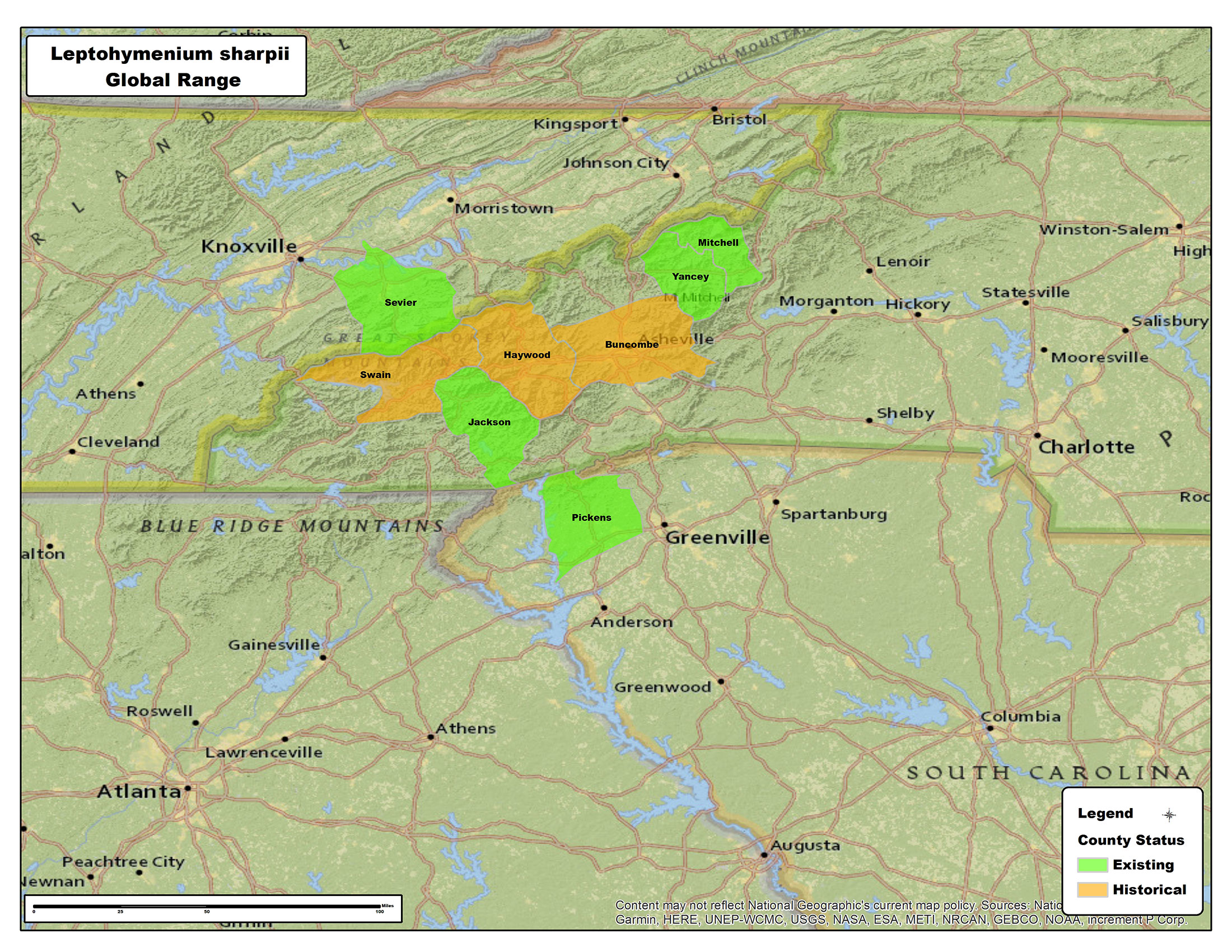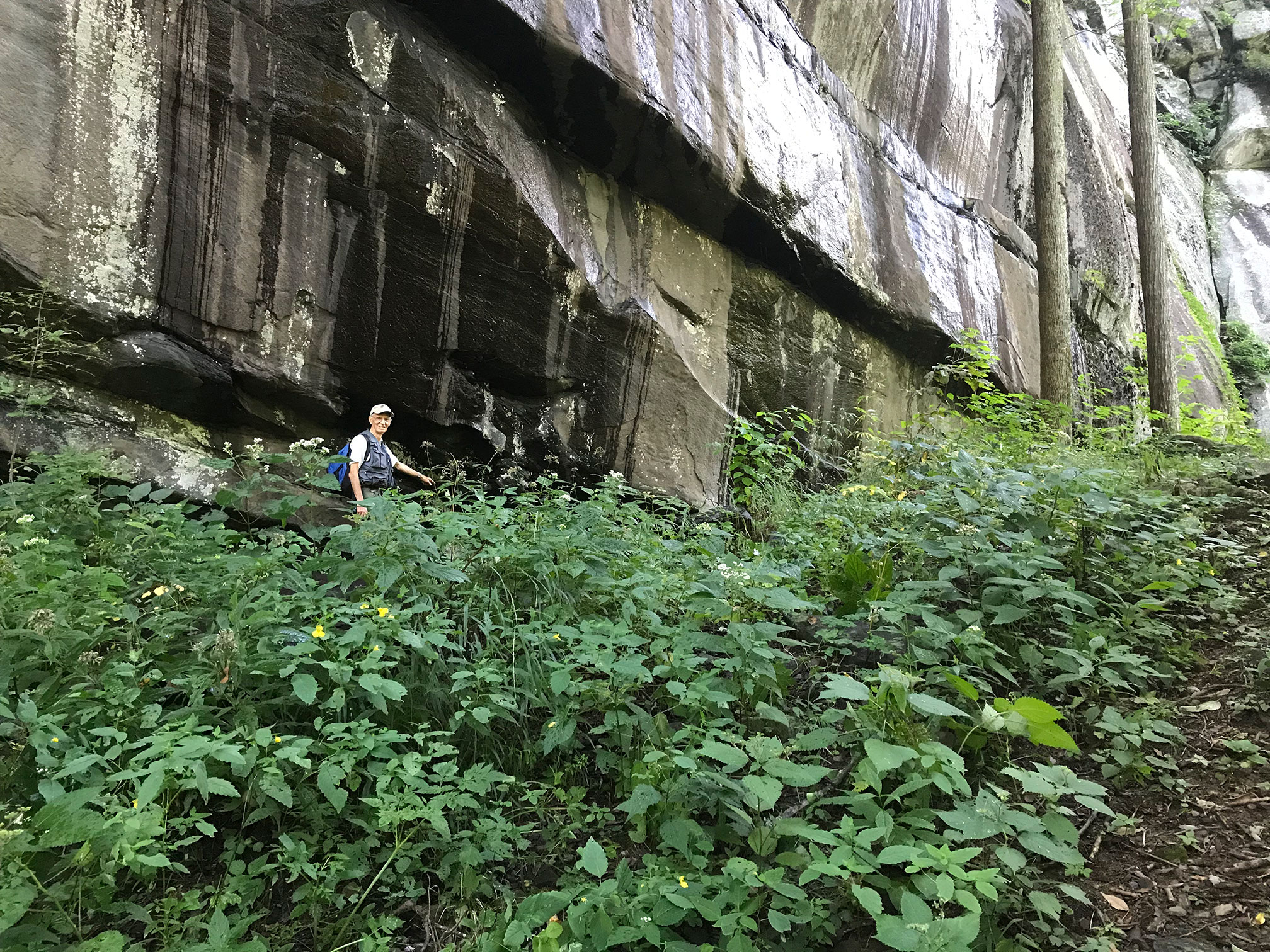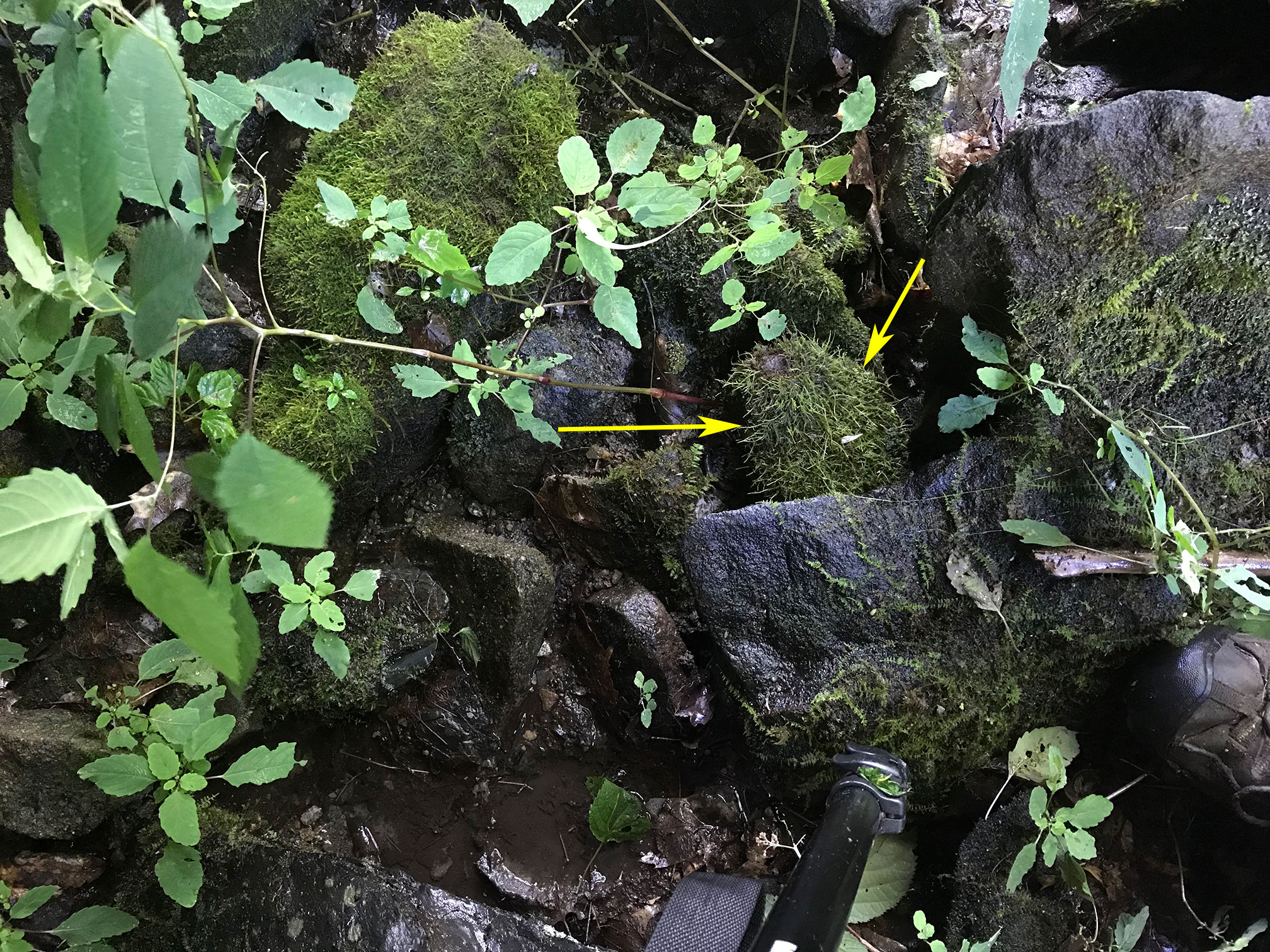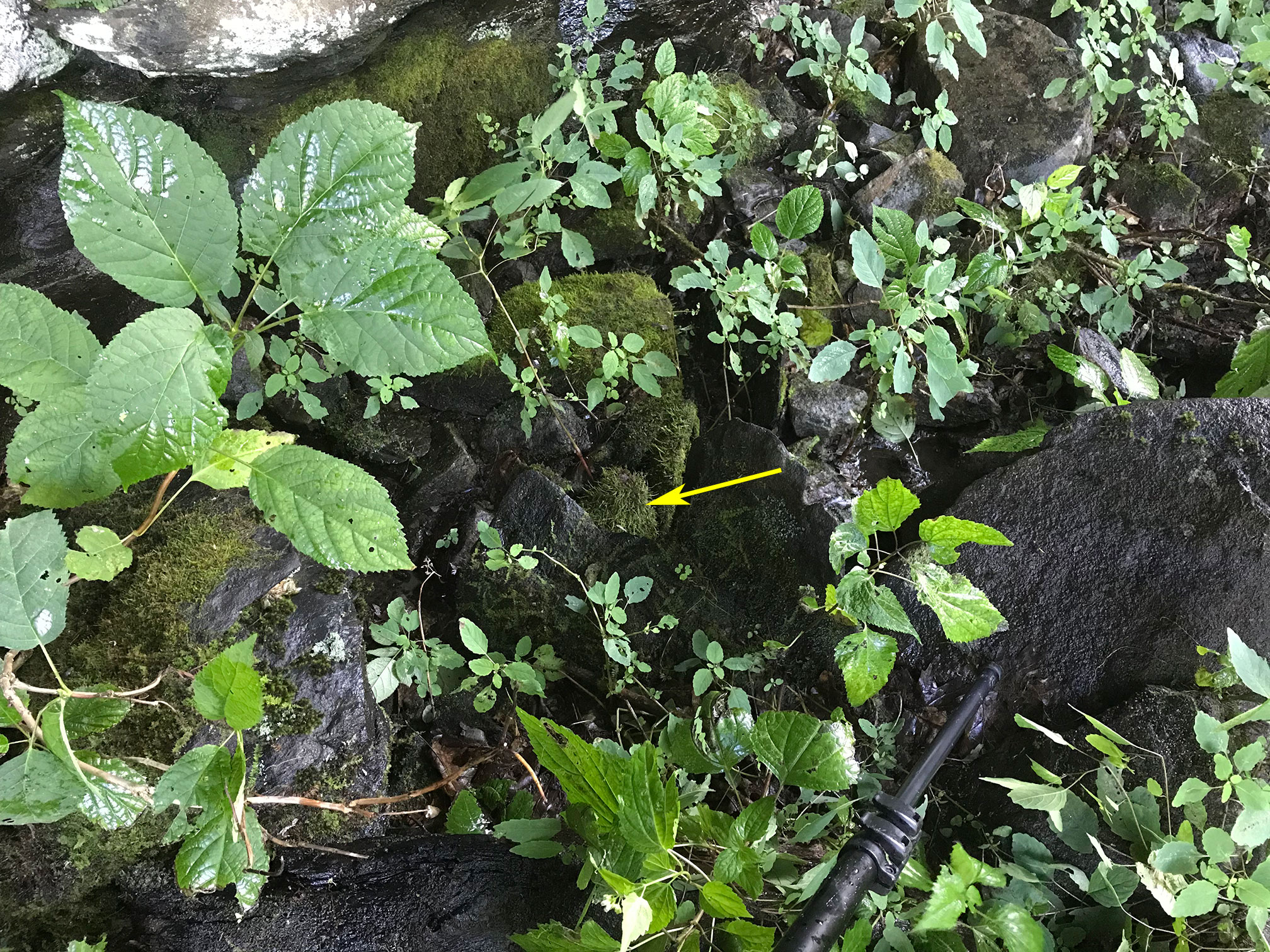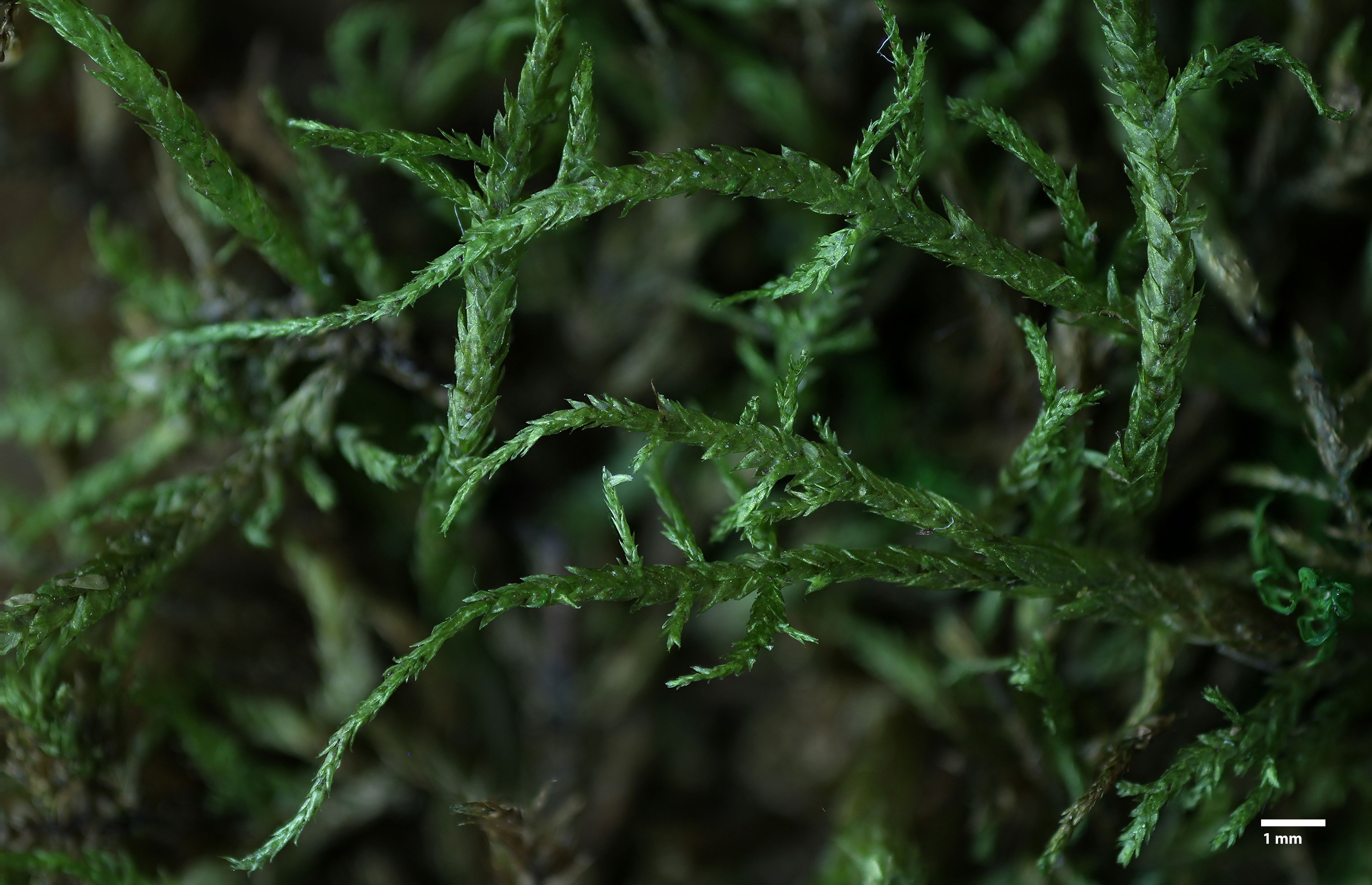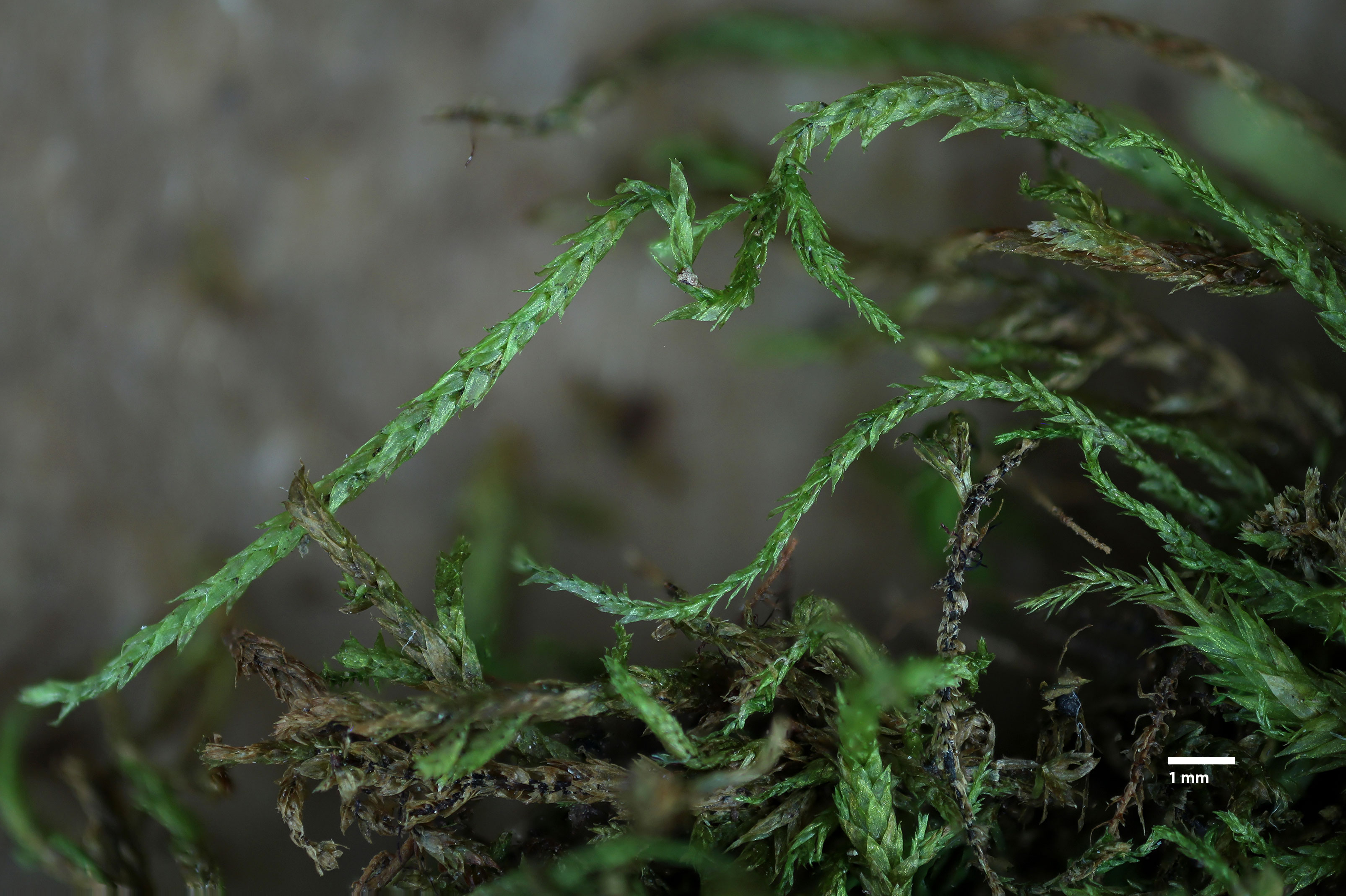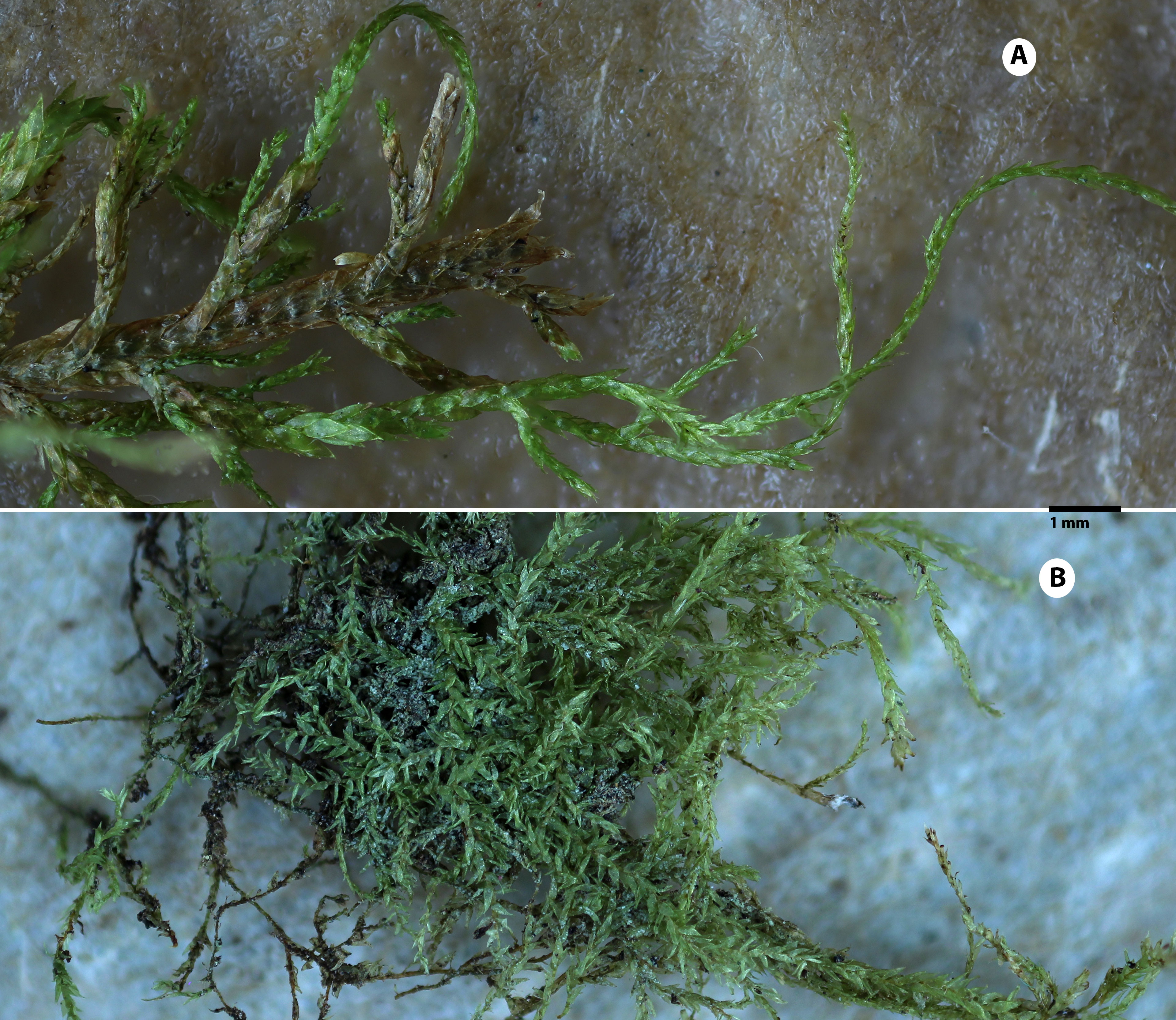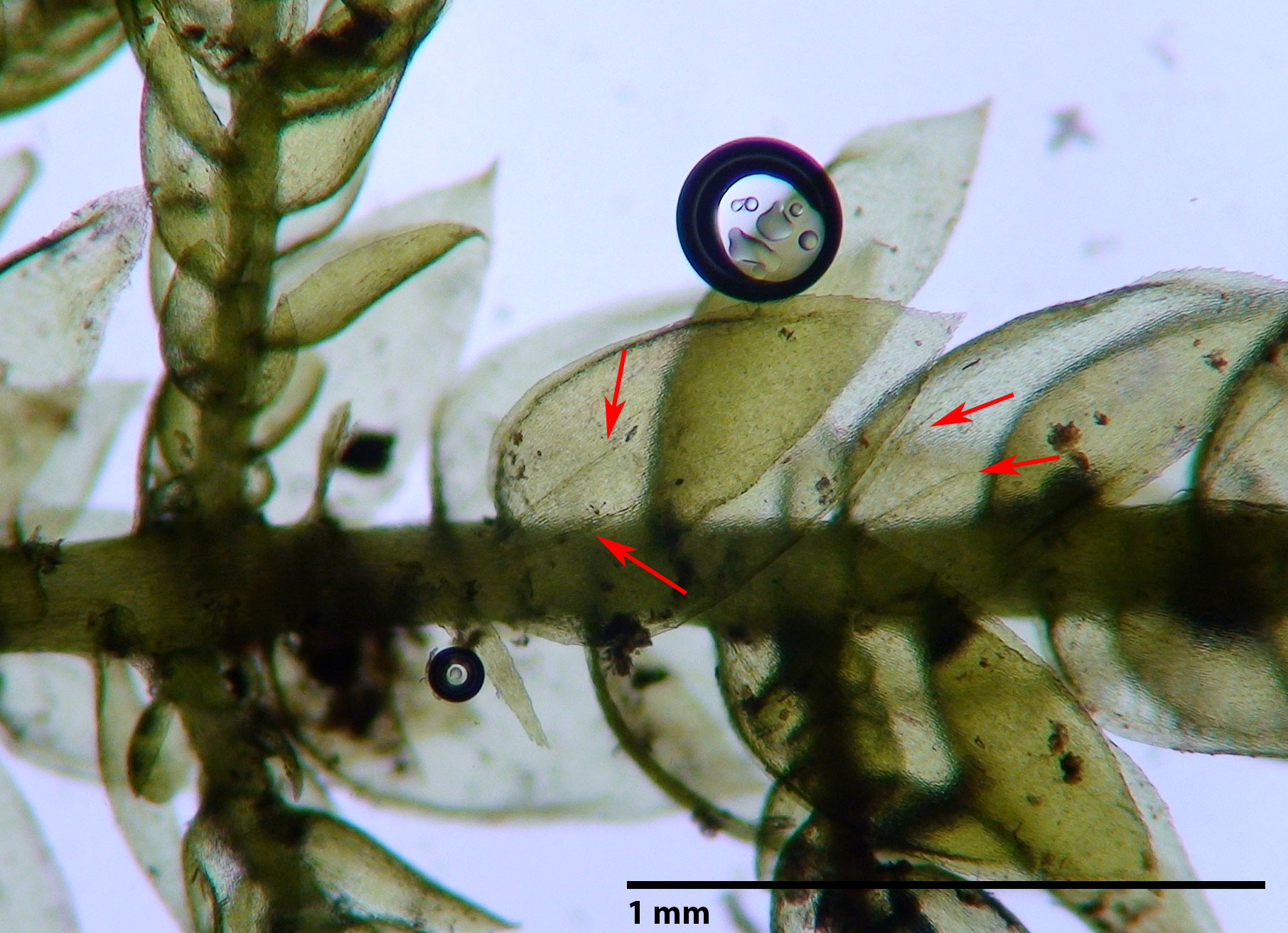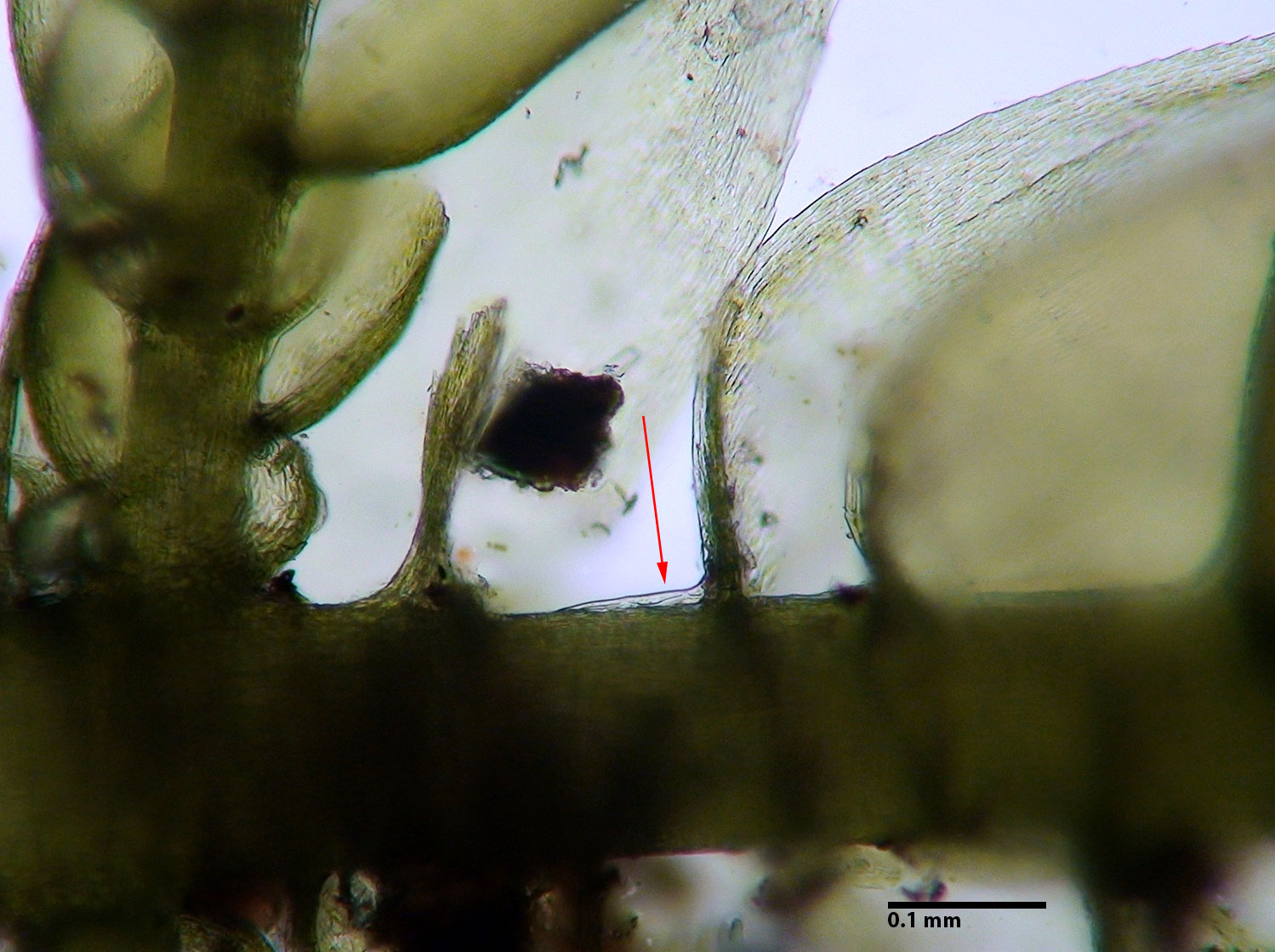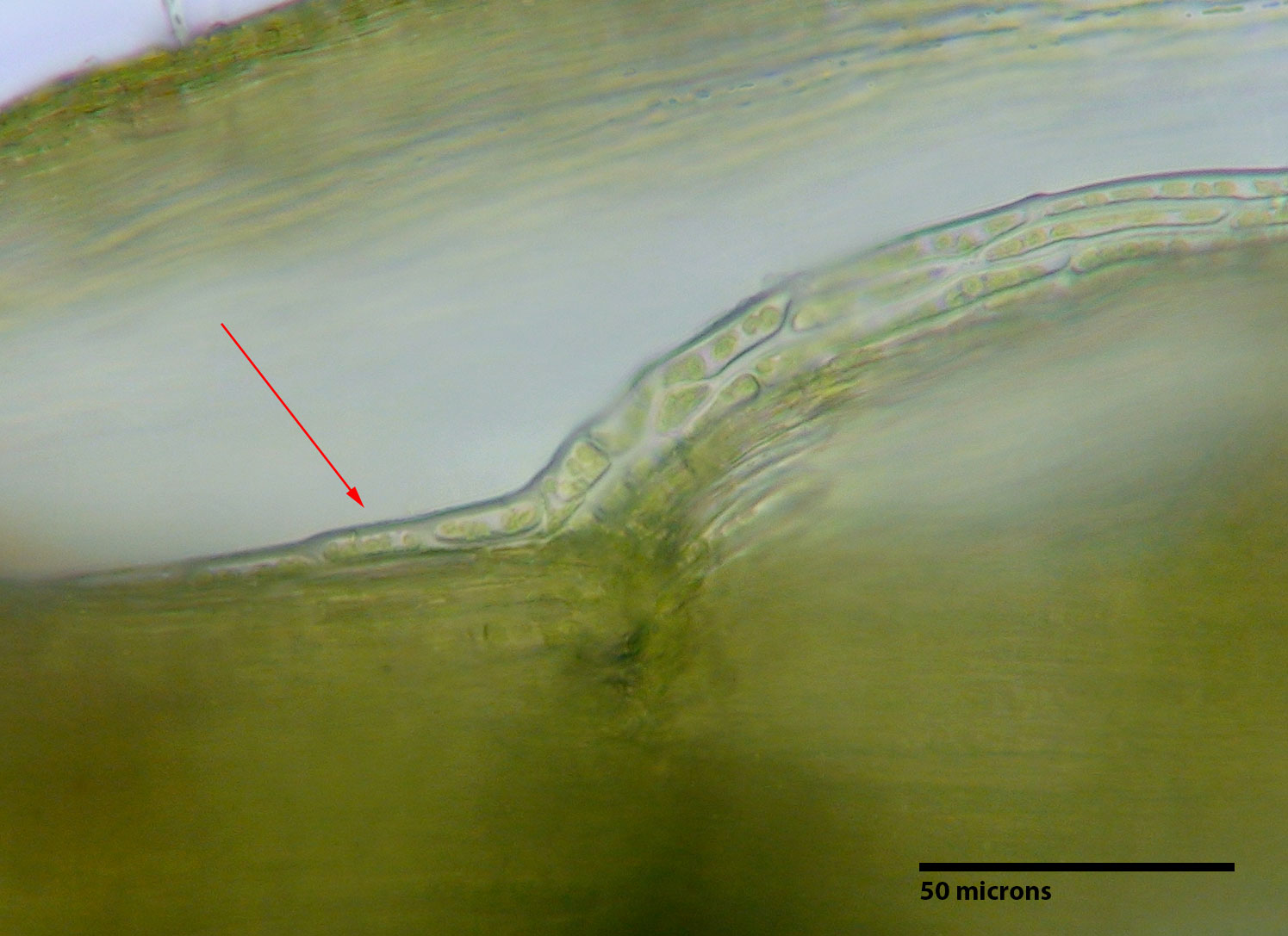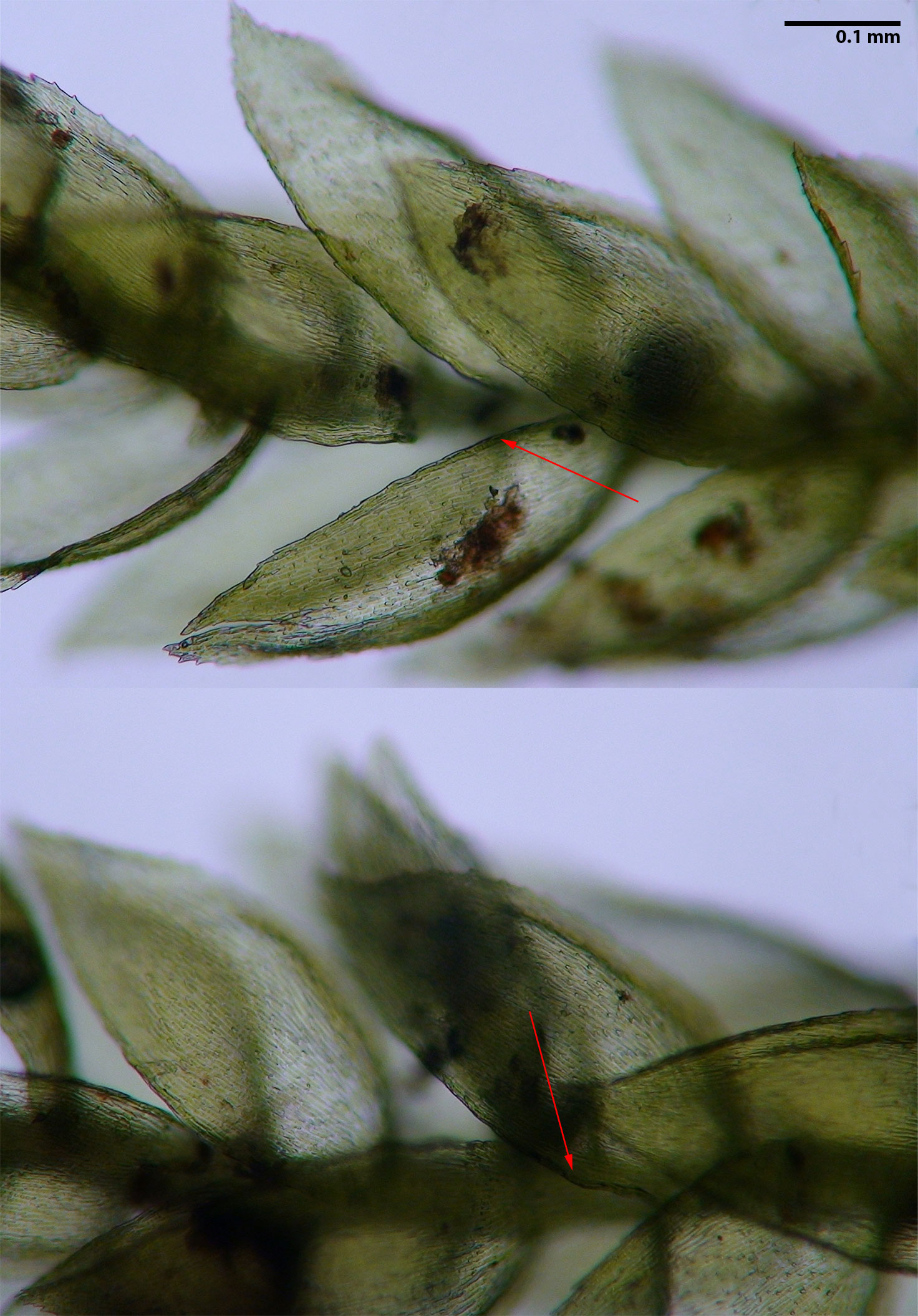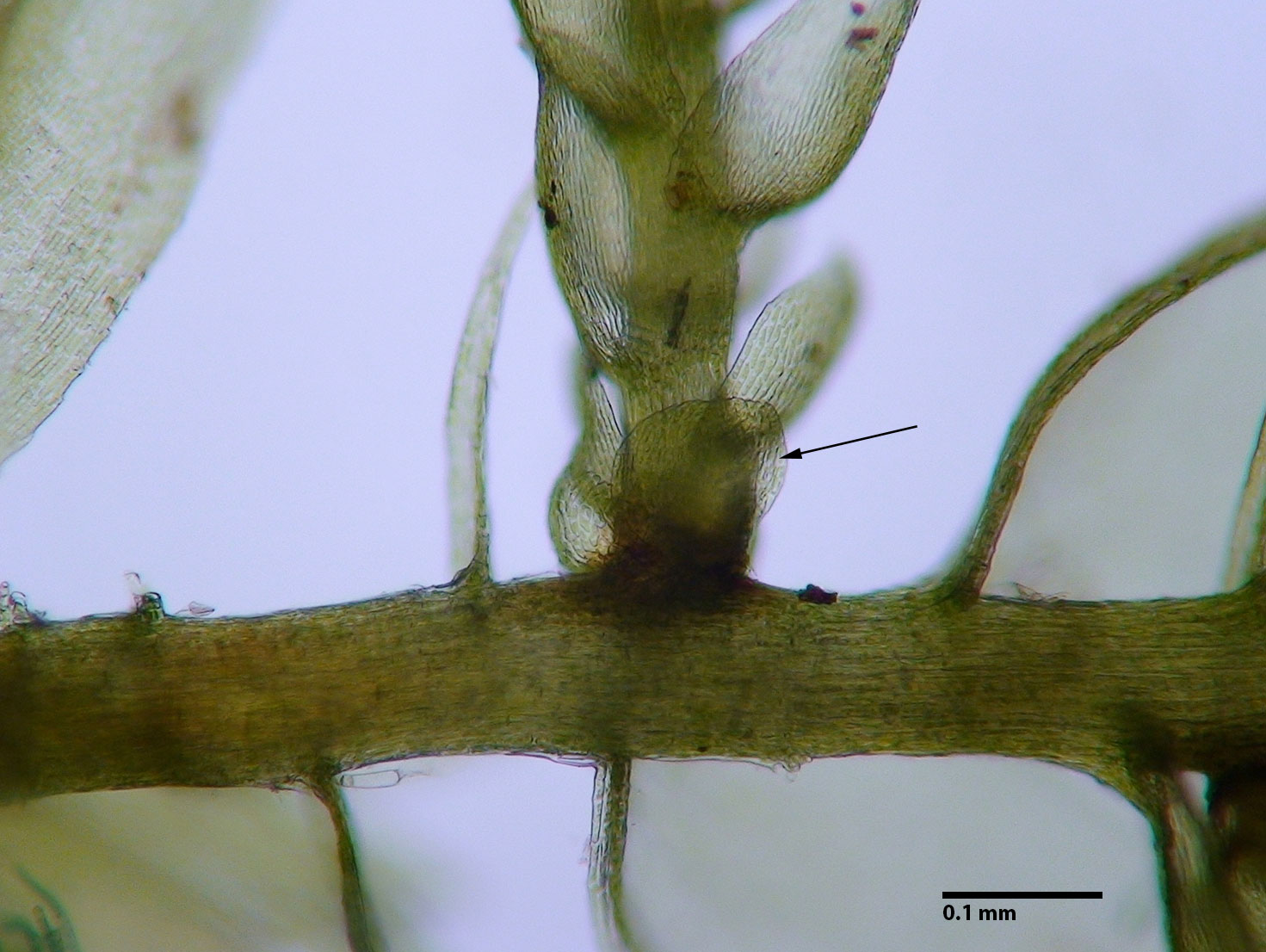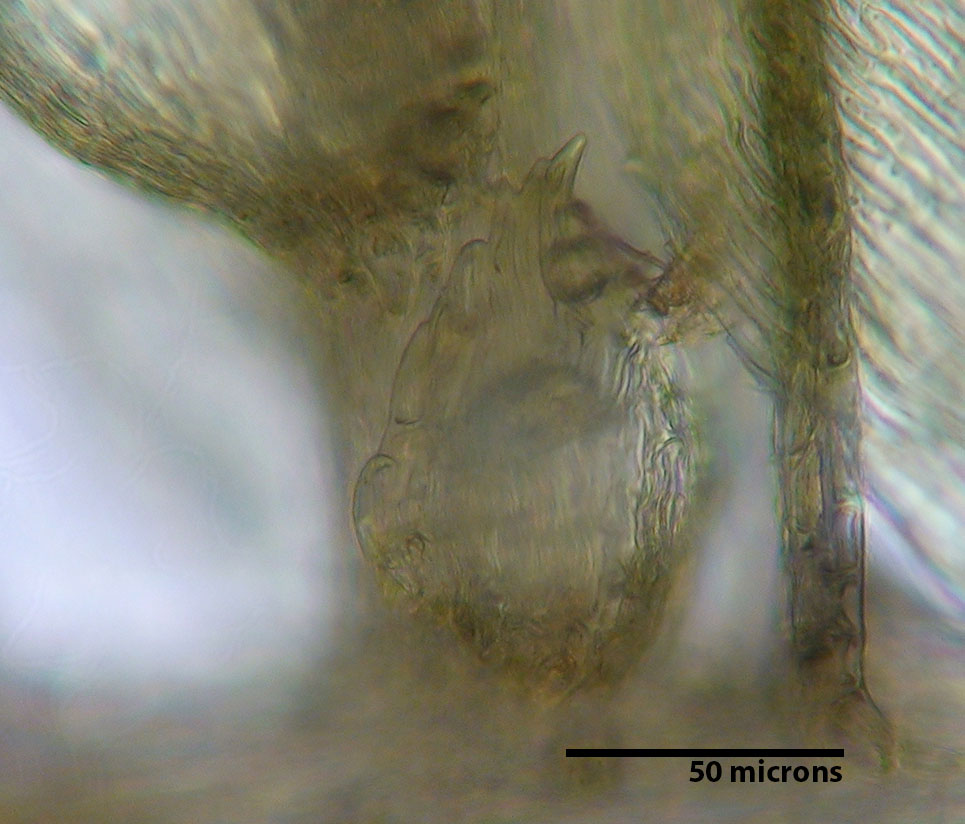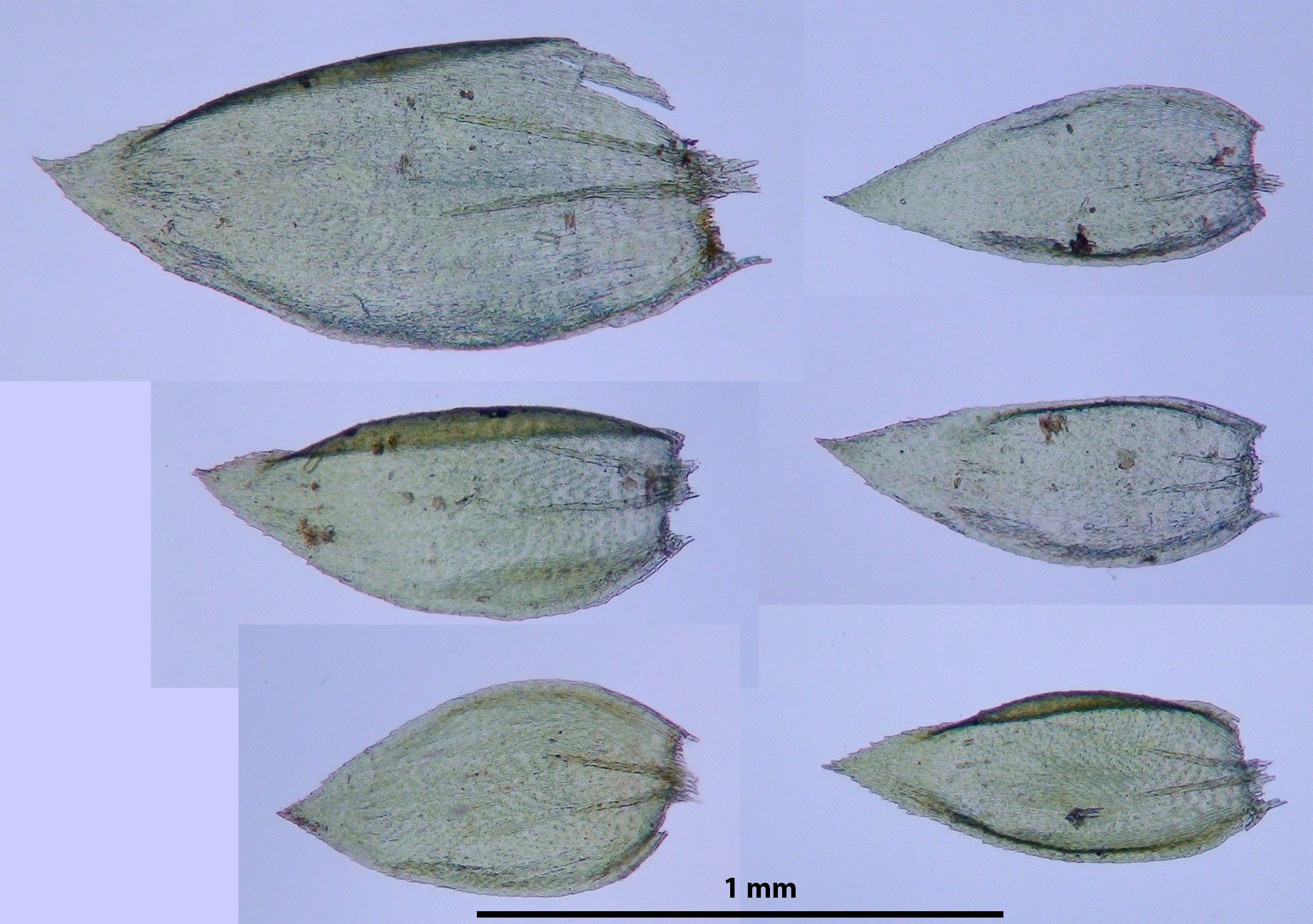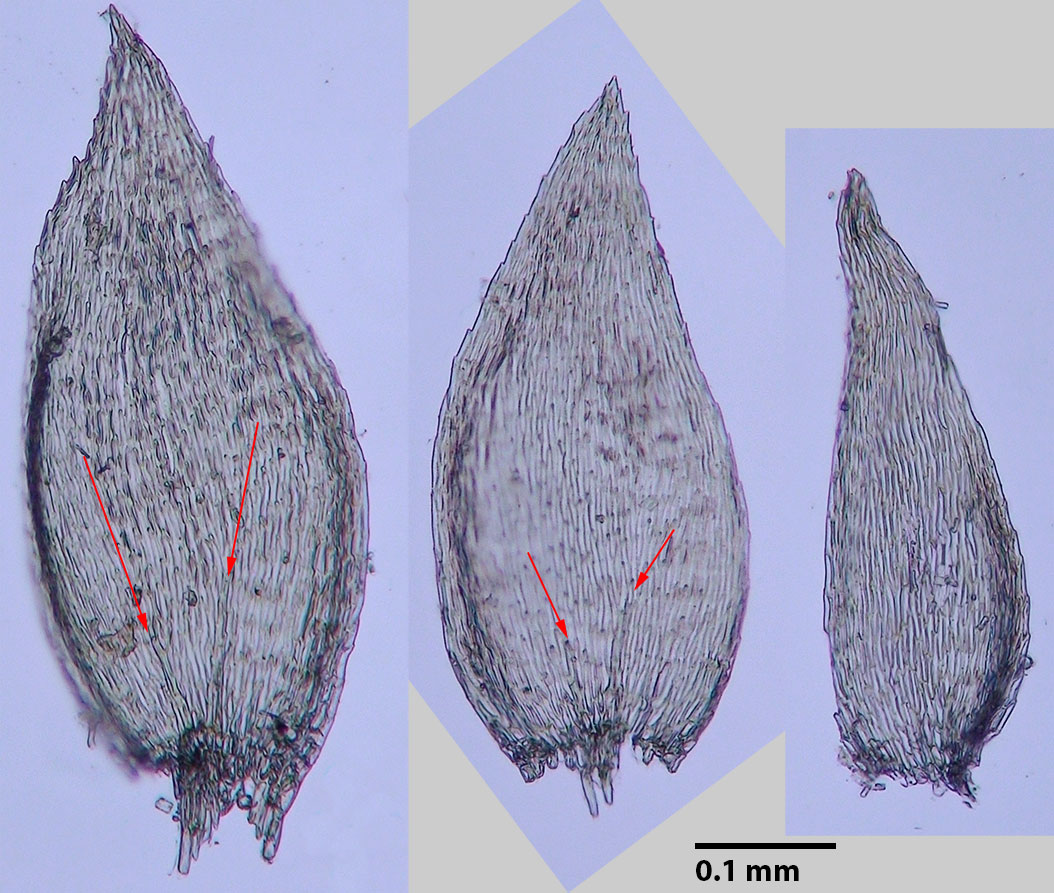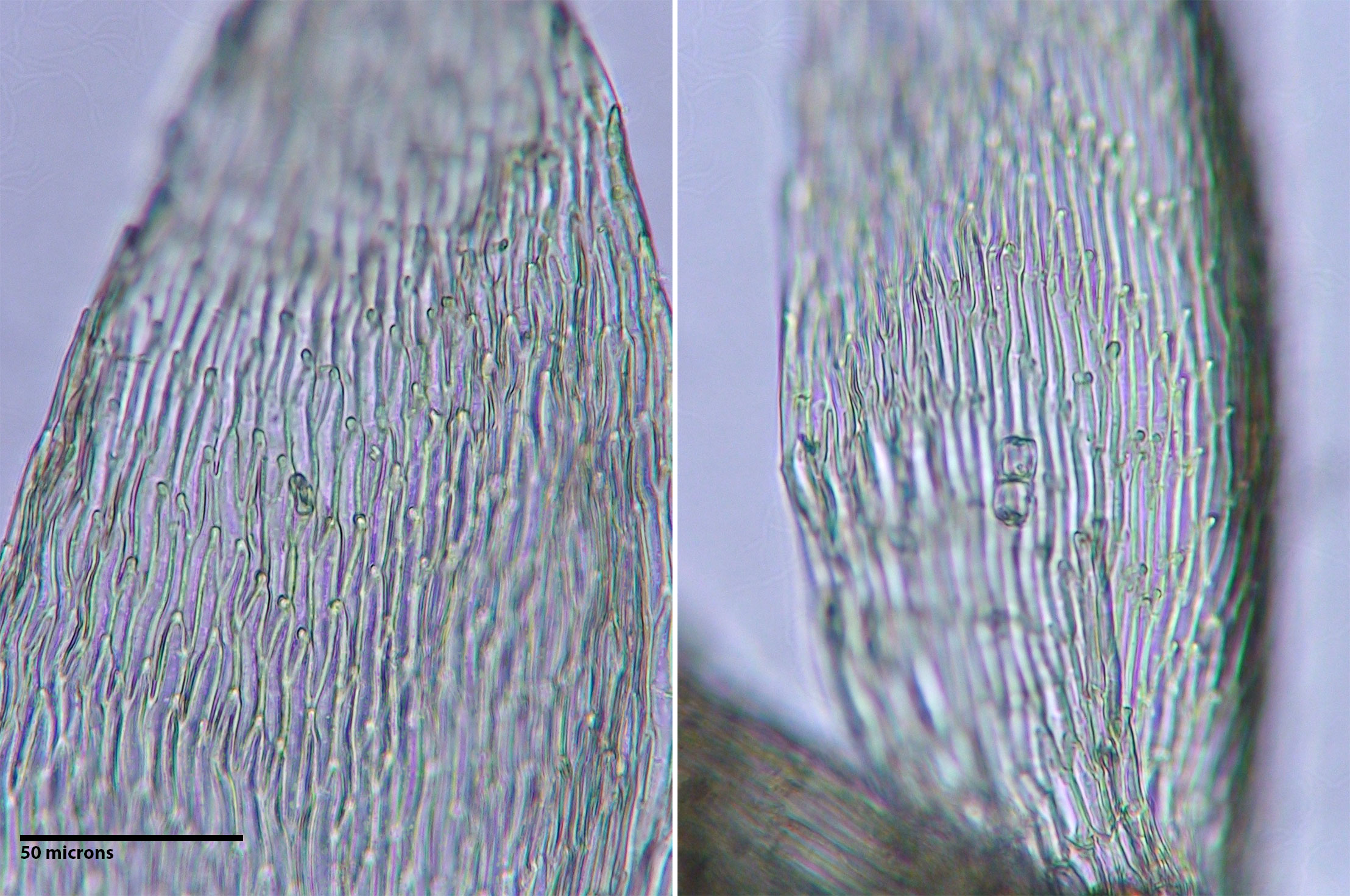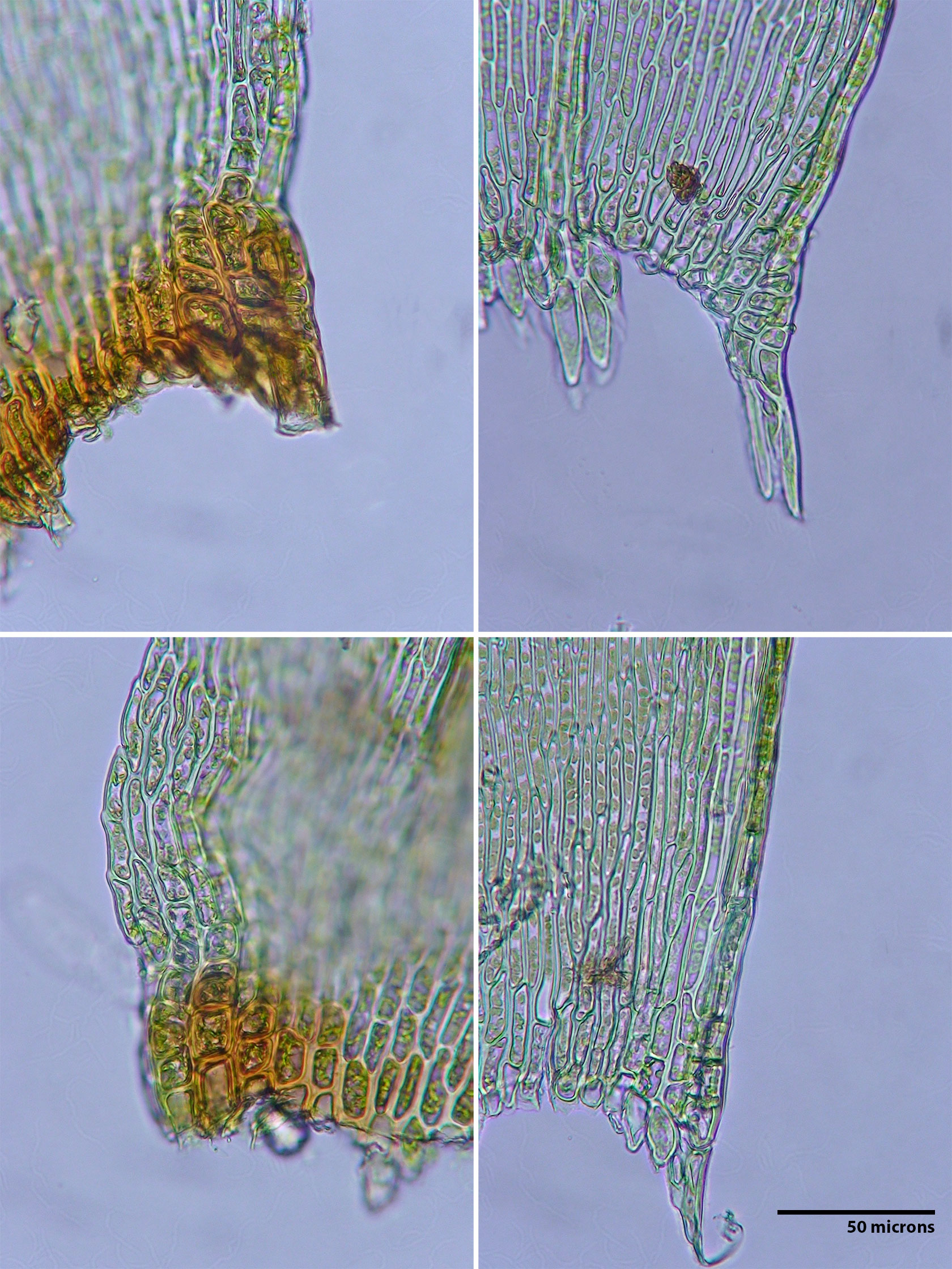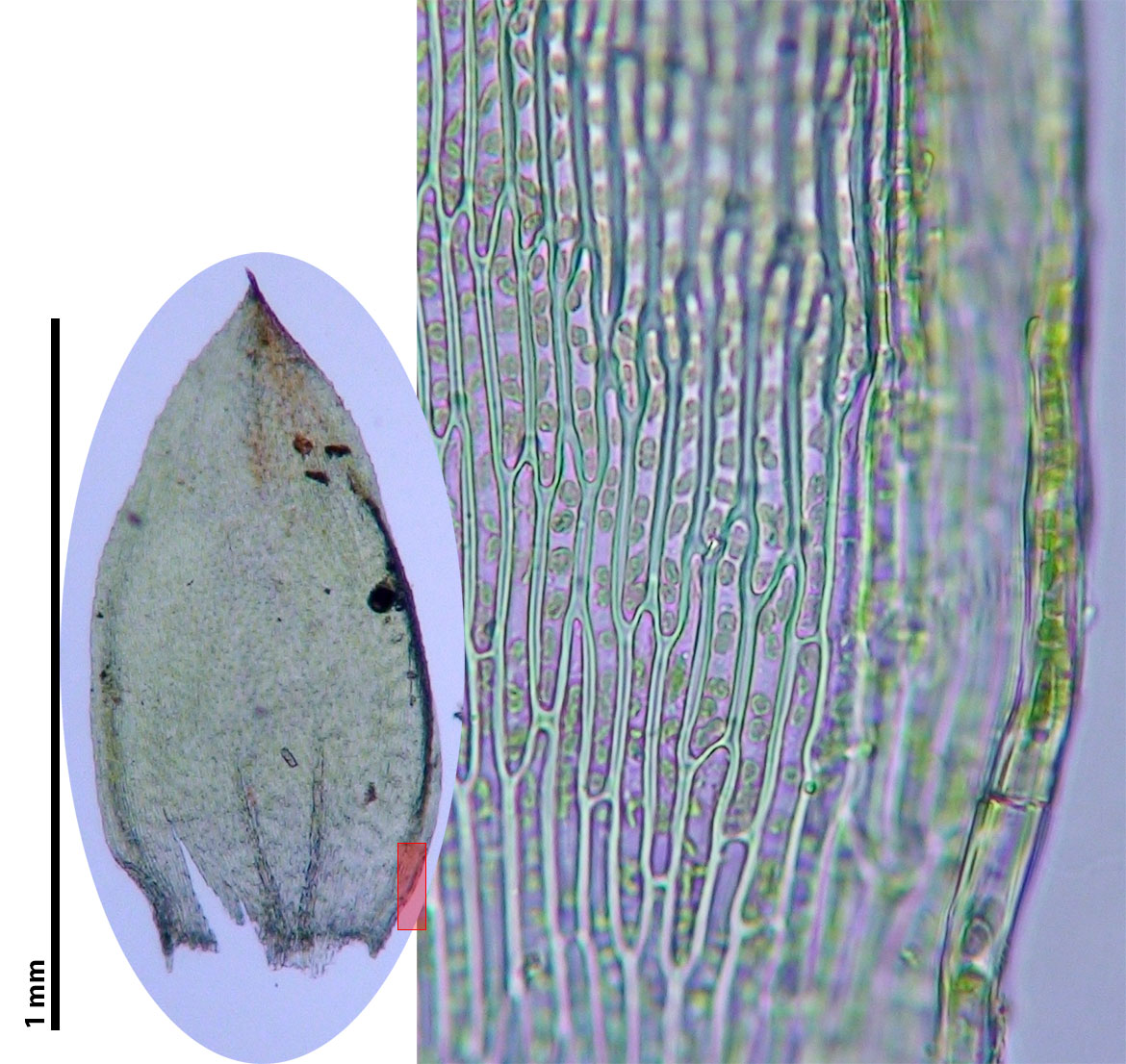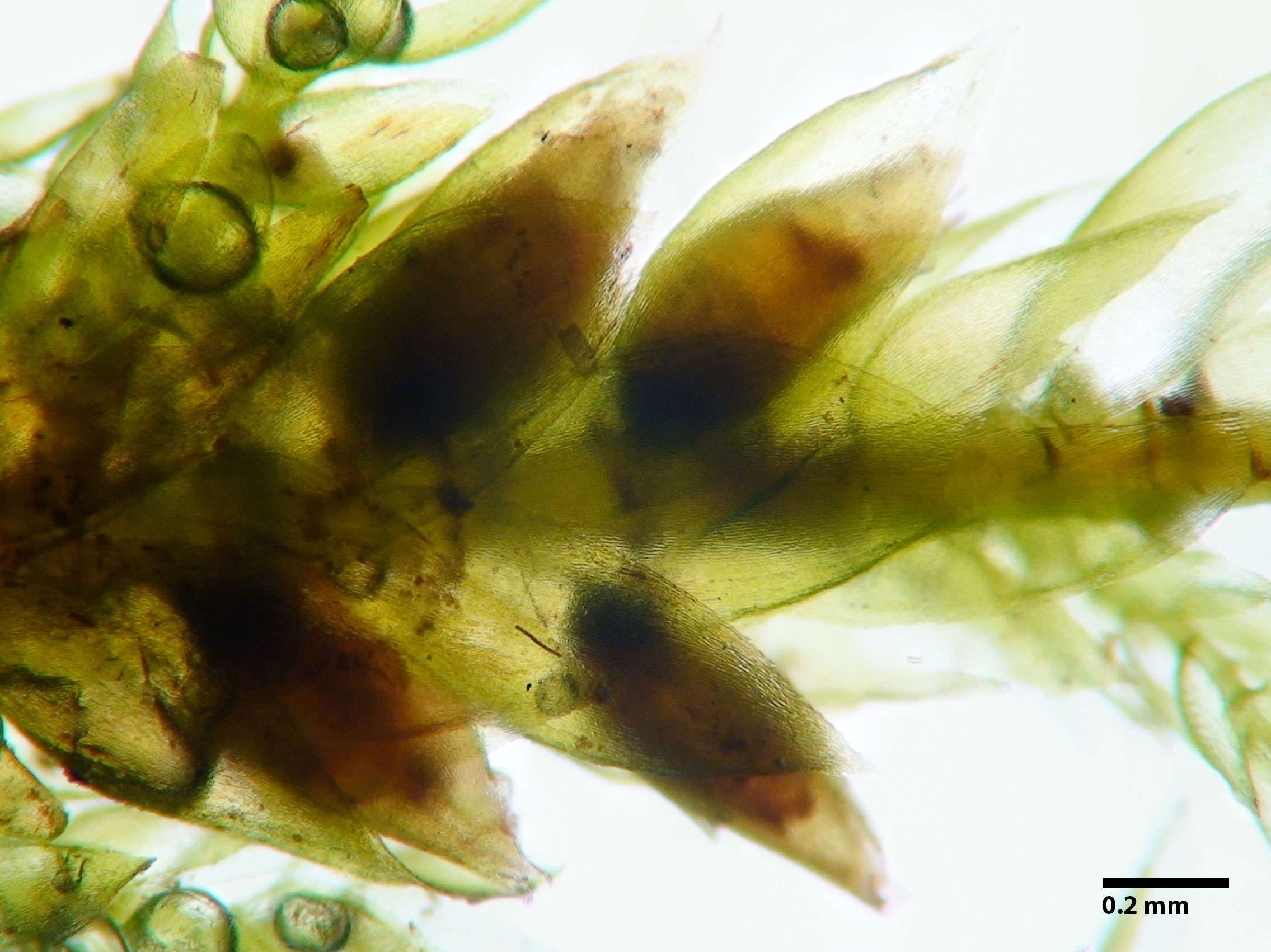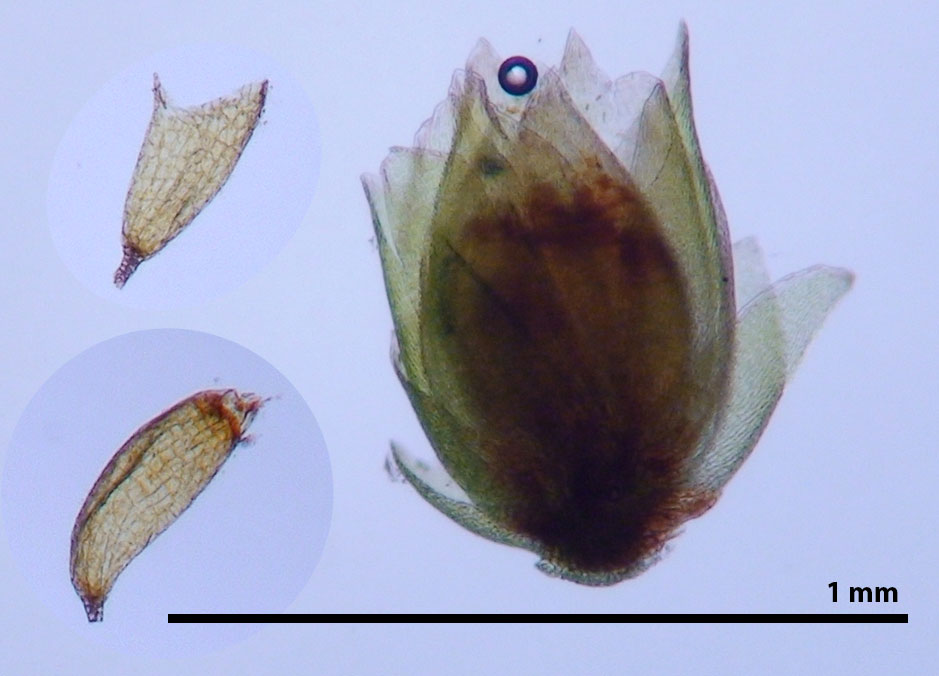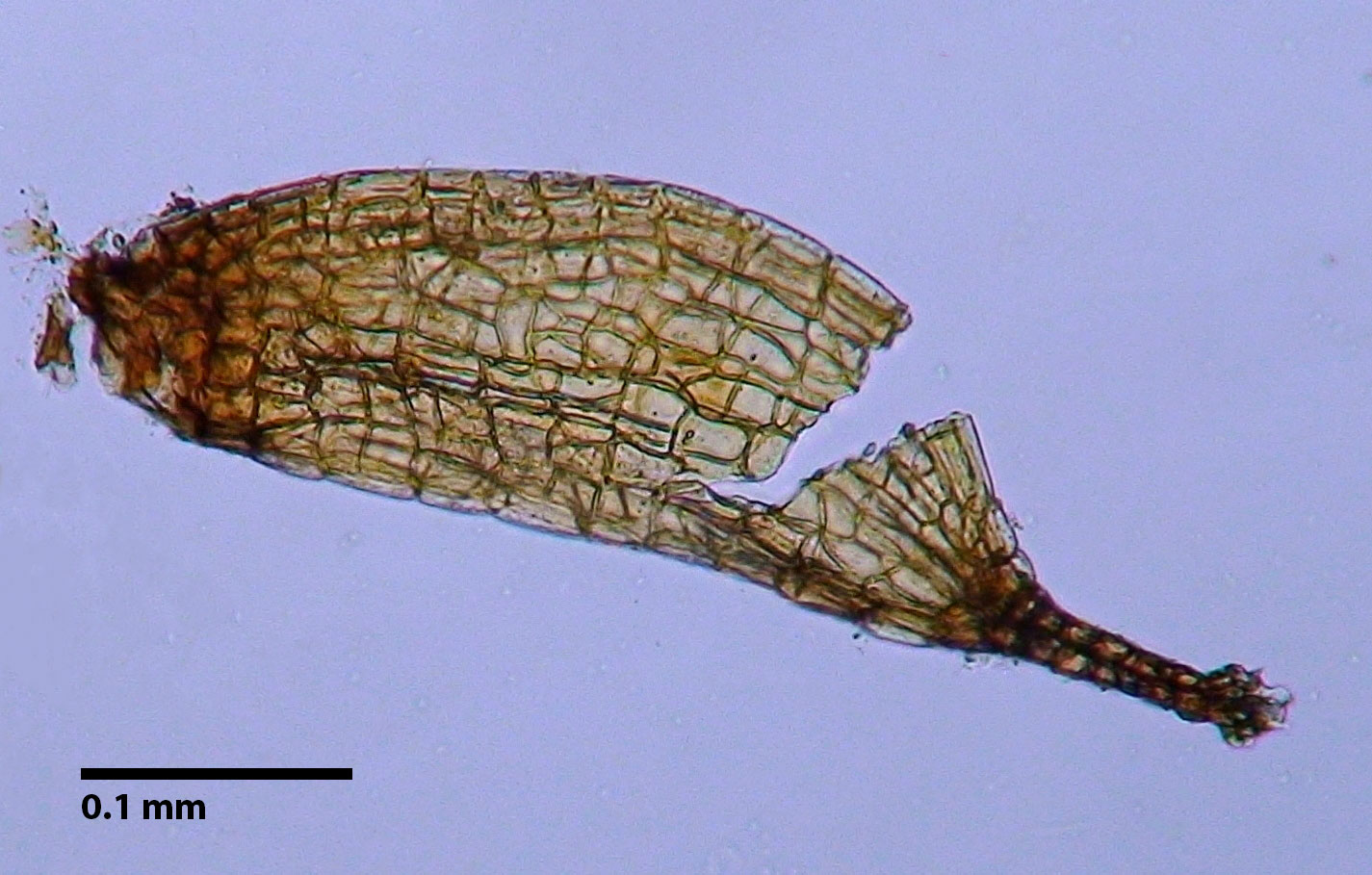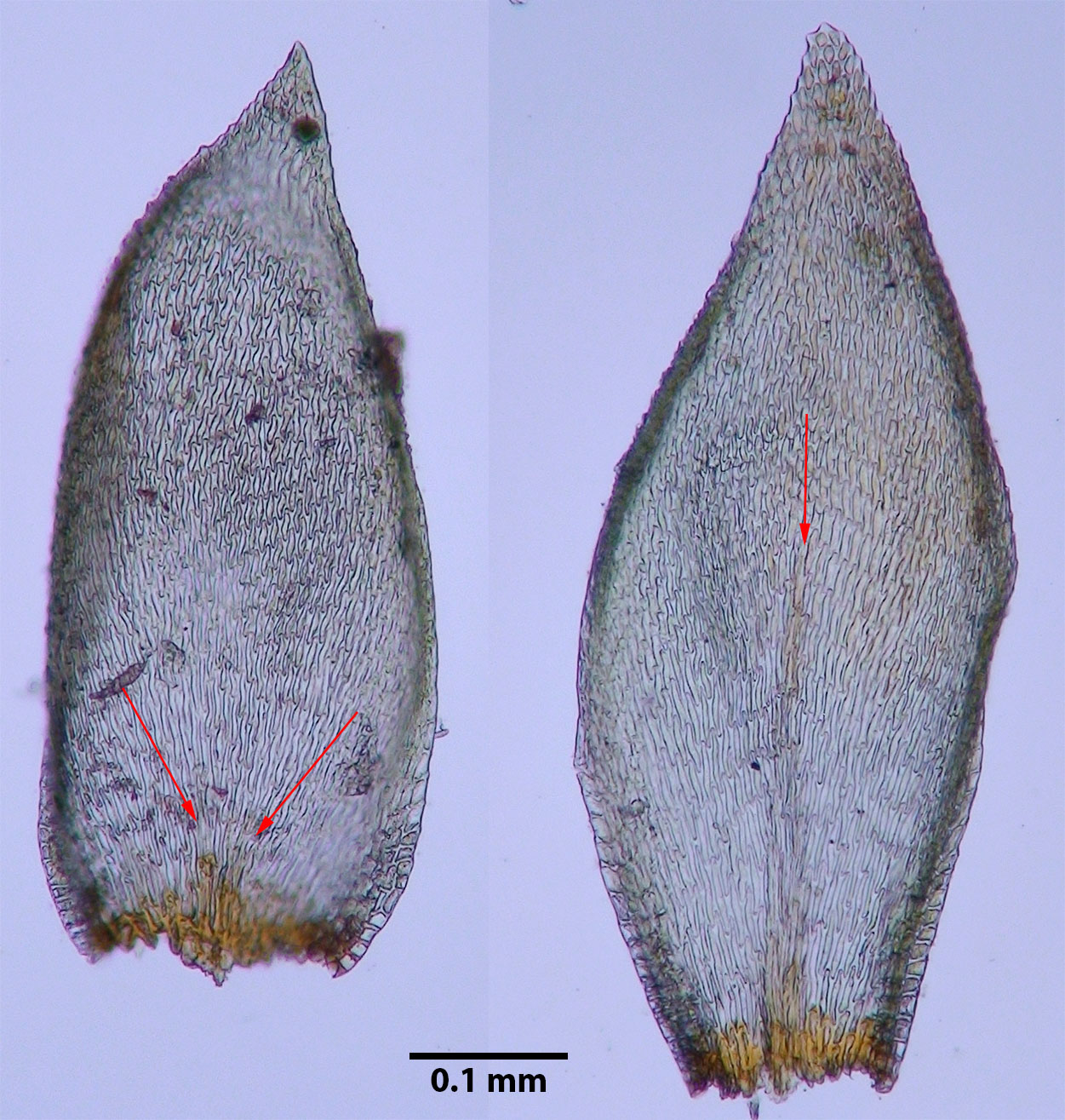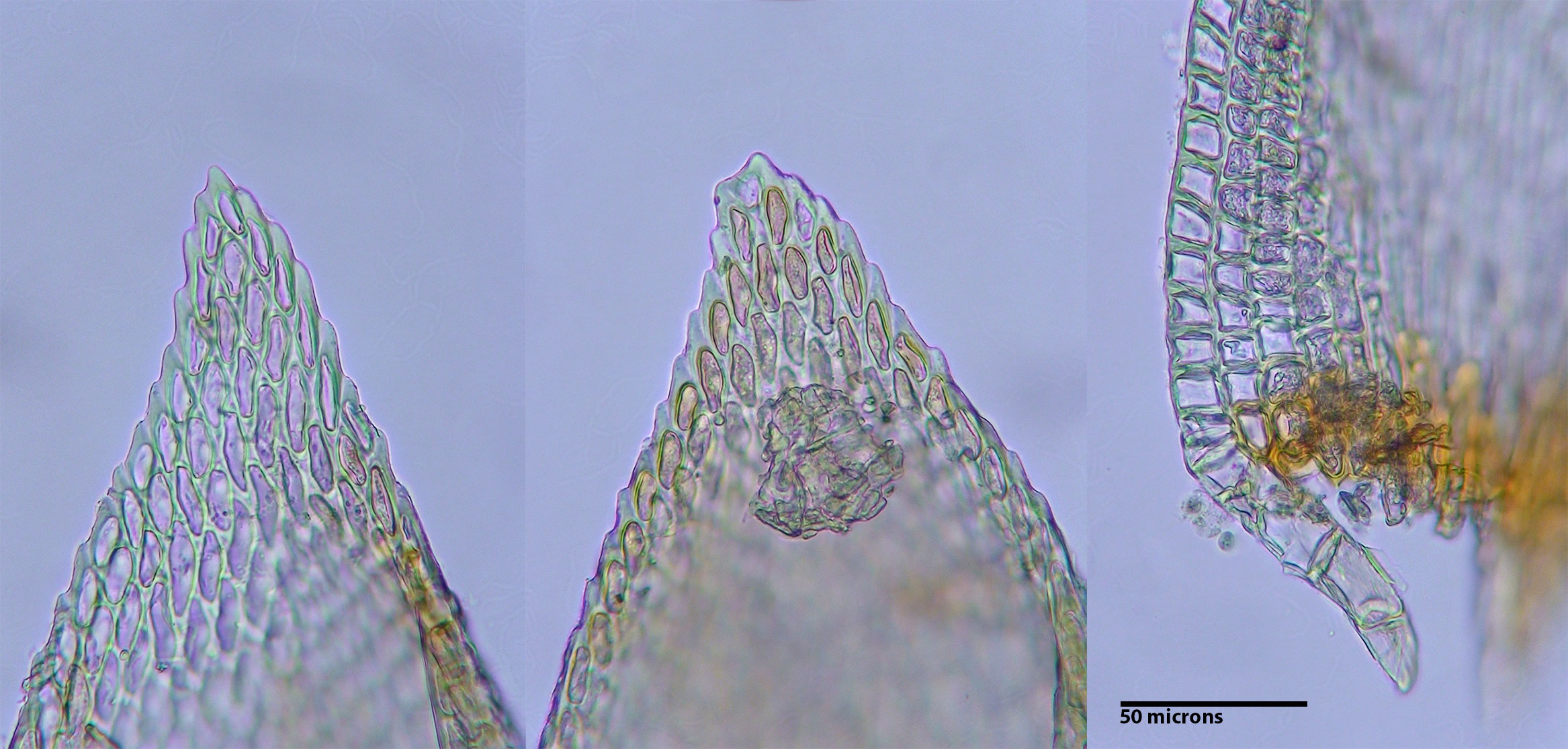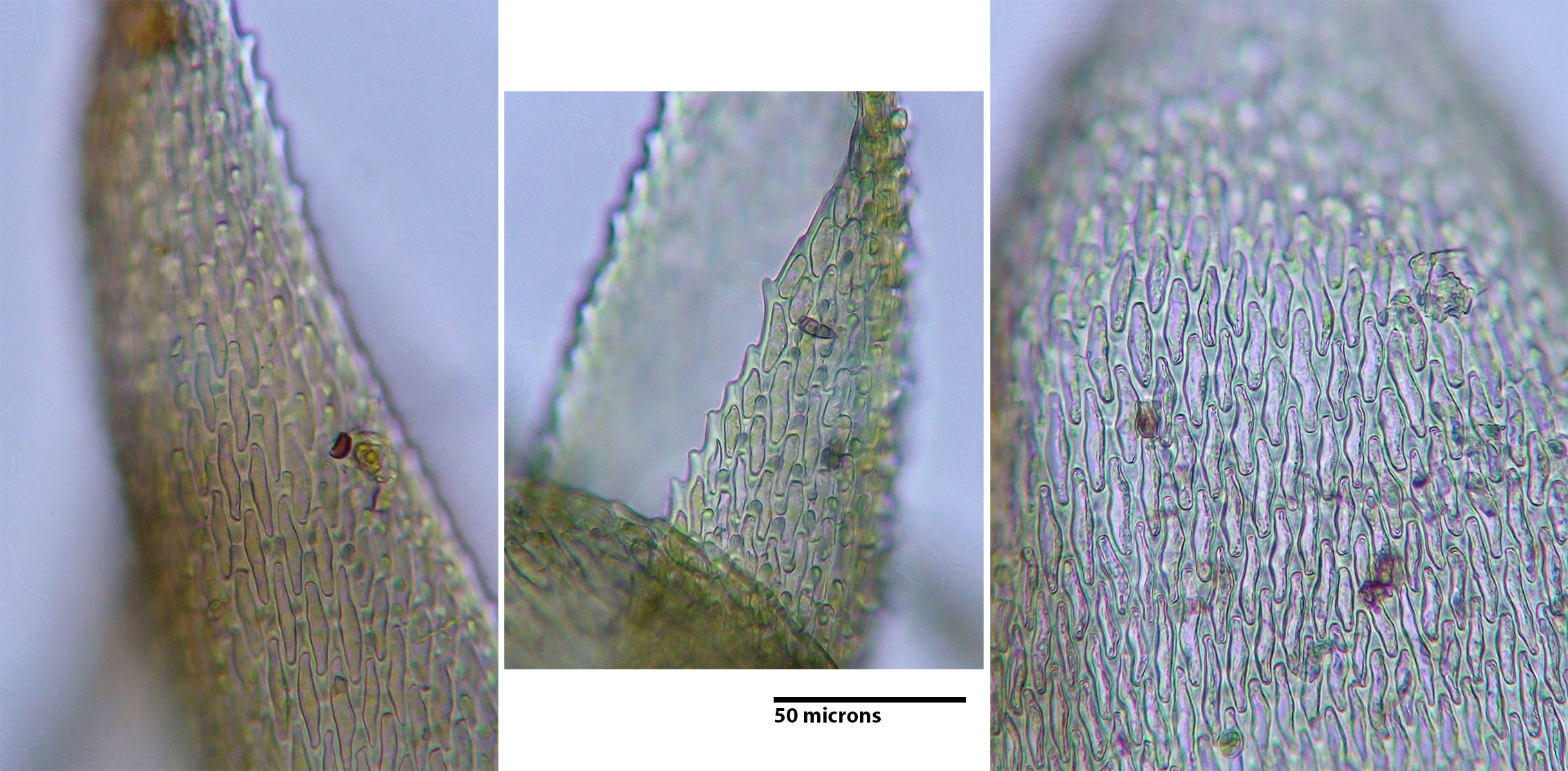Leptohymenium sharpii (H. A. Crum & L. E. Anderson) W. R. Buck & H. A. Crum
Family: Hylocomiaceae
Synonyms
Hylocomium splendens var. tenue Sharp (1933)
Hylocomium splendens var. gracilius (Boulay) Husn. sensu Crum et al. 1965
Pterigynandrum sharpii H. A. Crum & L. E. Anderson (1967)
Taxiphyllum sharpii (H. A. Crum & L. E. Anderson) H. Robinson (1974)
Mittenothamnium sharpii (H. A. Crum & L. E. Anderson) W. R. Buck (1980)
NatureServe Conservation Status
G1
Distribution
Endemic to the Southern Appalachians. North Carolina, South Carolina, Tennessee. (Rohrer 2014).
Habitat
"Hemlock-hardwood coves or in the transition spruce-fir zone" (Anderson 1996). On shaded rock that is permanently moist to wet. Occurring on wet (often dripping), vertical faces of rock, protected rock ledges, on tops of low stones at ground level where protected by overtopping cliffs, or rock outcroppings/boulders in steep banks in deep stream ravines. Label data on specimen A.C. Risk 8123 (MDKY) "on dry outcrop of Thunderhead Sandstone, 50 yds. west of falls, Tsuga forest with thickets of Rhododendron maximum and Leucothoe" indicates the species may tolerate minor desiccation in otherwise very humid, shaded locations. Risk, as cited in Anderson (1996), stated, "The species appears to favor seepy cliffs and recesses associated with waterfalls. Most of the places where I have seen it, it has been on a rock face that slants backward such that the base of the rock face is farther from your feet than the upper part of the outcrop is from your face. [] I've unfortunately, had little time to explore the higher elevation areas in the Smokies, but would not be surprised if Leptohymenium occurs on wet outcrops both near and away from streams." Occurring over a wide range of elevations, 500 - 1700 meters (Rohrer 2014).
Brief Description and Tips for Identification
"Small, slender plants in flat, shiny, bright-green, yellow-green, or yellow-brown mats, creeping, freely and irregularly branched, scarcely recognizable in the field. Stems creeping or curved-ascending; branches straight, horizontal, slender and often nearly filiform; pseudoparaphyllia and brood branches none. Stem leaves erect, not particularly crowded, 0.5-1.0 mm long, moderately concave, oblong-ovate or oblong-lanceolate, sharply or bluntly acute; costae often 1/4 - 1/2 the leaf length; cells oblong-linear, somewhat flexuose, not thick-walled, finely prorulose at back; subquadrate alar cells few and inconspicuous. Branch leaves similar, small, 0.25-0.5 mm long. Inflorescences and sporophytes unknown." Quoted text from Anderson (1996). In addition, leaf margins are serrulate especially towards the leaf apex and narrowly recurved towards the leaf base; leaves are narrowly decurrent.
Dioicous. "Inflorescences and sporophytes unknown" (Rohrer 2014). Male plants were collected during the course of this project (see images below).
Buck (1980, p. 461) included the following description that is quite helpful to anyone identifying this moss: “linear, flexuose leaf cells, which are consistently papillose at the back of the leaf from projecting cell ends (prorulose), [] double costa extending about one-fourth the leaf length, and [] leaf serrations [] mostly pointed toward the leaf apex.”
There are many other pleurocarpous mosses that share the same general leaf shape and growth habit. Sharp (1933) suggested “plants have somewhat the gross appearance of Hygrohypnum micans” (=Hageniella micans), a moss that grows on wet rocks. Forms of Scwetschkeopsis fabronia, a shiny pleurocarp, can be mistaken in the field, and possibly mistaken in the lab given the projecting cell ends at the back of the leaf and possibility of a short double costa in this normally ecostate moss. Sematophyllum demissum is very common on rocks near streams but is usually on rocks that remain rather dry except during periods of rain. It differs in having an entire leaf margin and enlarged alar cells.
For those who have seen Leptohymenium sharpii in the field, it is recognizable or at least strongly suspected when viewed with a hand lens. When collecting this plant in Tennessee in 1990 and again in North Carolina in 2002, David Smith (TENN) stated he thought the specimens would turn out to be L. sharpii, and indeed this was so (personal observation by P.G. Davison). A nuanced feature to consider in the field is that plants have the suggestion of being somewhat flattened and they are shiny. This perception is strongly influenced by the microhabitat where the moss occurs, namely very moist to wet rock, nearly constantly shaded and cool. Material should always be lab verified.
A suite of characters should be confirmed when identifying Leptohymenium sharpii. None of the characters by themselves is diagnostic as many other mosses have them.
Salient Features
- costa double
- leaves narrowly decurrent
- leaf cells at the back of leaf prorulate, i.e. papillose from projecting cell ends
- alar cells subquadrate, few and inconspicuous
- paraphyllia and pseudoparaphyllia absent
References
Anderson, L.E. 1996 (revised 1997 by Amoroso). Bryophyte Status Survey: Leptohymenium sharpii (Crum & Anderson) Buck & Crum. North Carolina Heritage Program.
Buck, W. R. 1980. Animadversions on Pterigynandrum with special commentary on Forsstroemia and Leptopterigynandrum. Bryologist, 451-465
Buck, W. R., and H. A. Crum 1990. An evaluation of familial limits among the genera traditionally aligned with the Thuidiaceae and Leskeaceae. Contrib. Univ. Michigan Herb., 17, 55-69
Crum, H., and Anderson, L. E. 1967. The status of Hylocomium splendens var. tenue. The Bryologist, 98-101
Crum, H. A., and L.E. Anderson. 1981. Mosses of Eastern North America (Vol. 2). Columbia University Press
Crum, H.A., W.C. Stere, and L.E. Anderson. 1965. A List of the Mosses of North America. The Bryologist 68: 377-432
Robinson, H. 1974. Additions to the genus Taxiphyllum (Hypnaceae, Musci). Phytologia, 21, 289-293
Rohrer, J.R. 2014. Hylocomiaceae. In: Flora of North America, North of Mexico 28: 325-337
Sharp, A. J. 1933. Three new mosses from Tennessee. The Bryologist, 36, 20-23
Habitat
Habit
Habit
Morphology
Morphology
Morphology
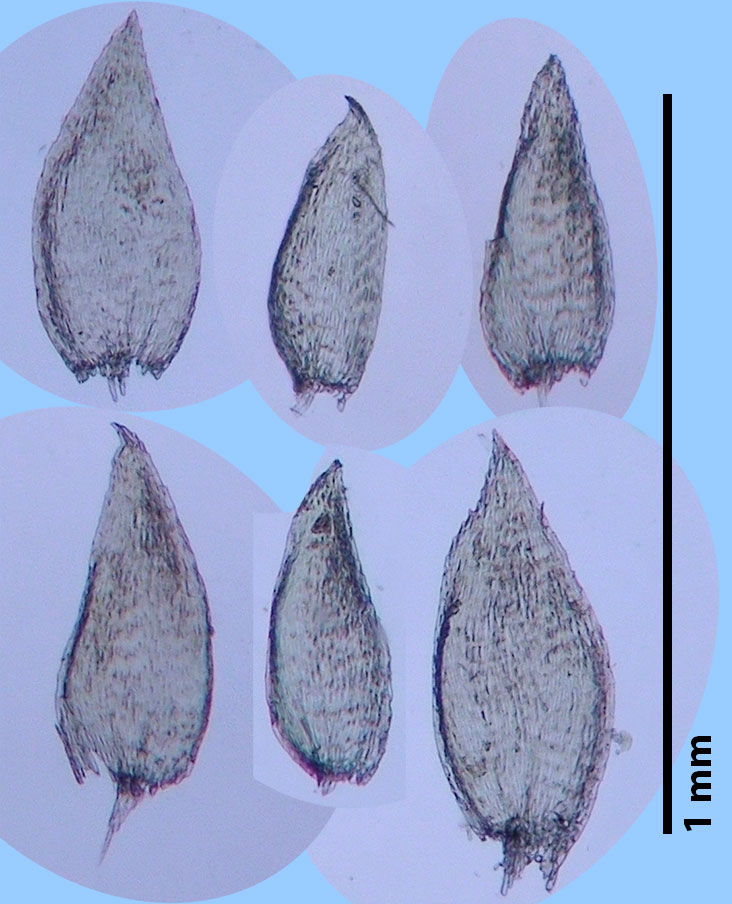
Leptohymenium sharpii
More leaf outlines from small material. Though lacking well developed costae, the costa is short and double, leaves were narrowly decurrent, and papillose at back due to projecting end walls of cells. Bill Buck confirmed the identity of this small expression collected in 2002 on the East Fork of the Tuckasegee River, N.C.
Morphology
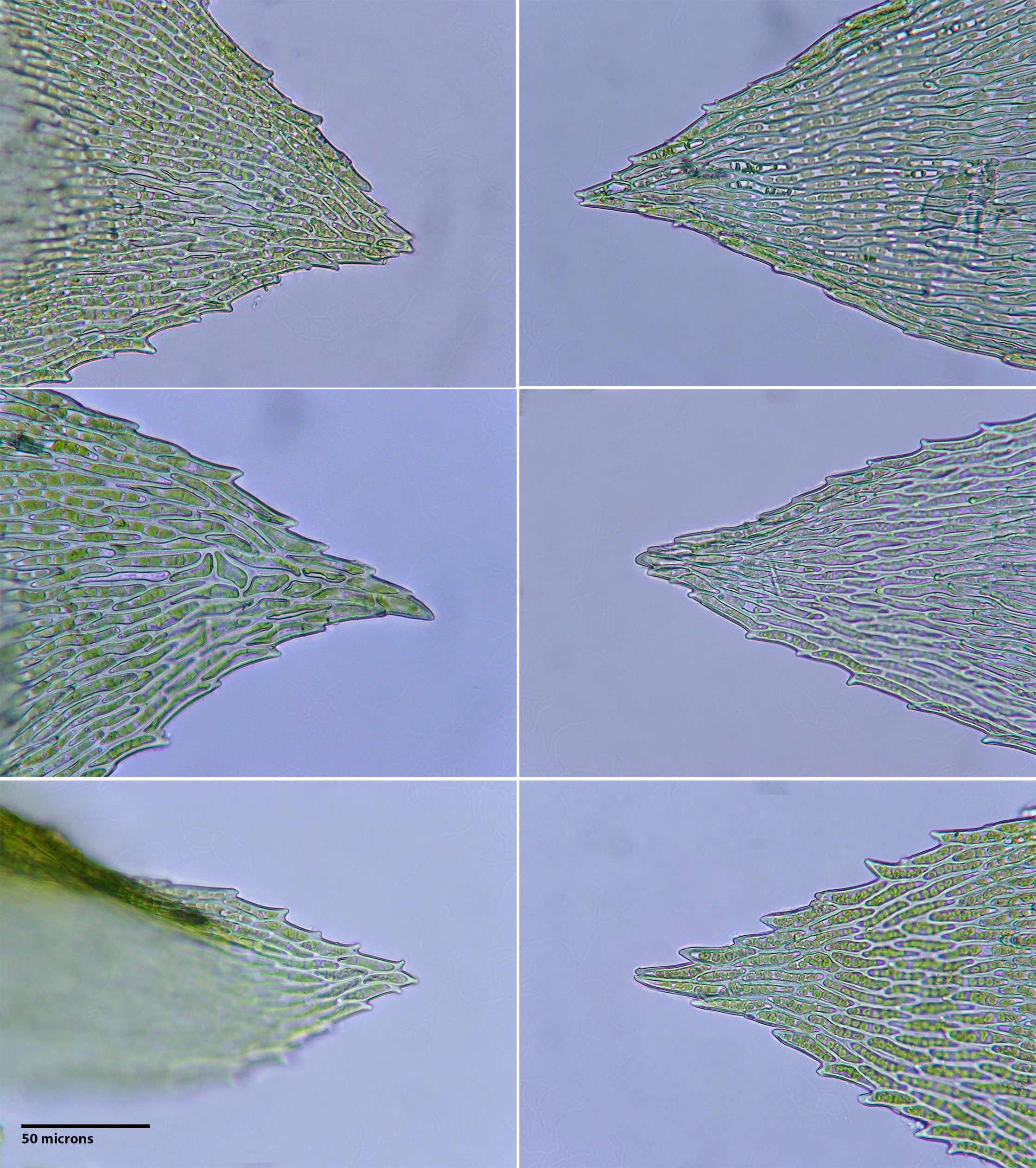
Leptohymenium sharpii
Leaf tips in the left column from larger leaves of robust stem sectors; right column from flagelliform sectors. In confirming the identification of this collection, Bill Buck (NY) commented (e-mail, October 2018), "Note the fairly prominent prorulose cells and how the leaf apex is often a pair of cells rather than just a single cell." Prorulose cells are shown in the next photograph.
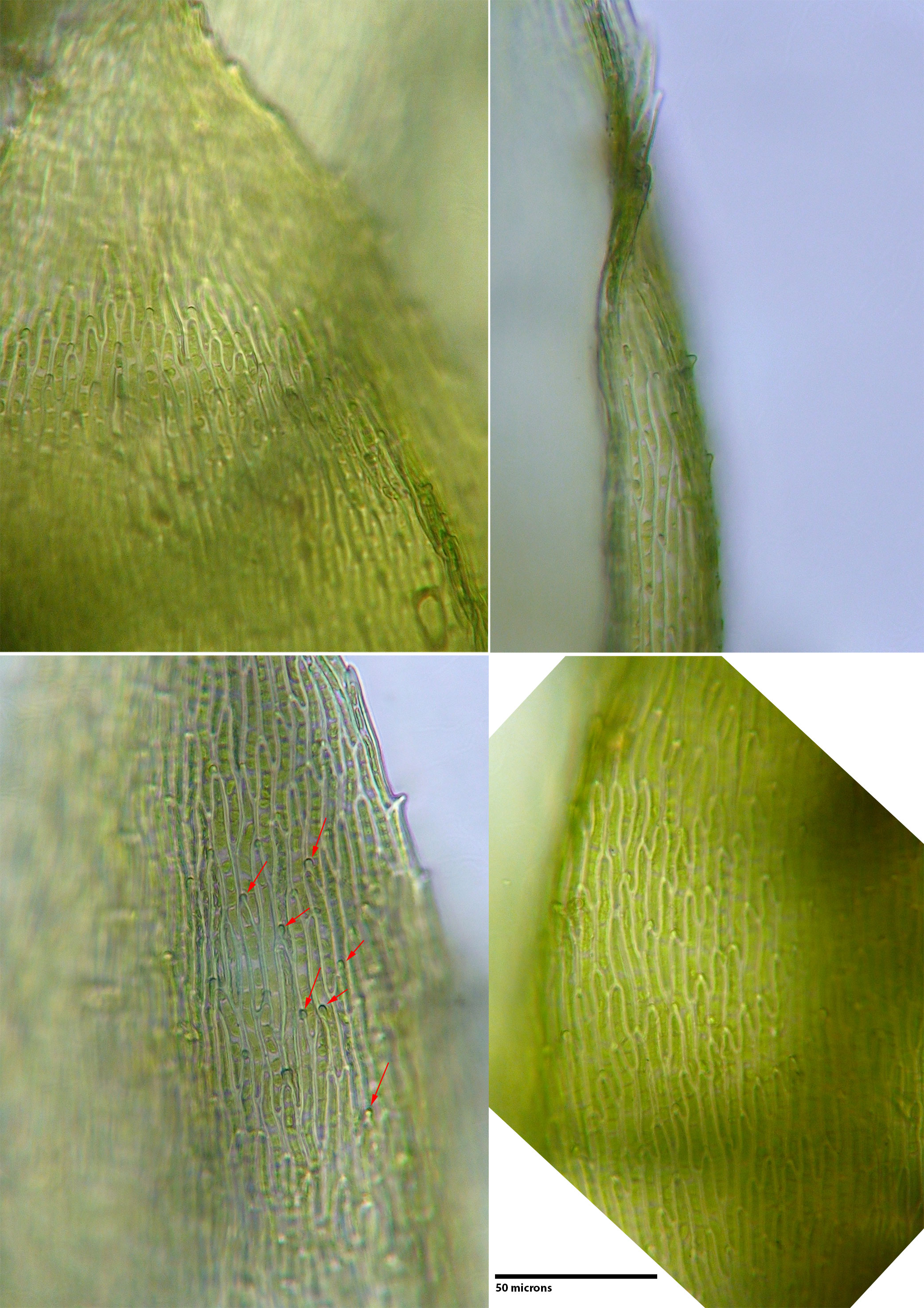
Leptohymenium sharpii
Several projecting end walls (papillae) are indicated in the lower left image. This type of papilla is technically called a prorula, and the term prorulose (prorulate) distinguish this type of papillosity from papillae that form over the cell lumen. The images above show the backside (abaxial surface) of leaves.
Morphology
Morphology
Similar Taxon
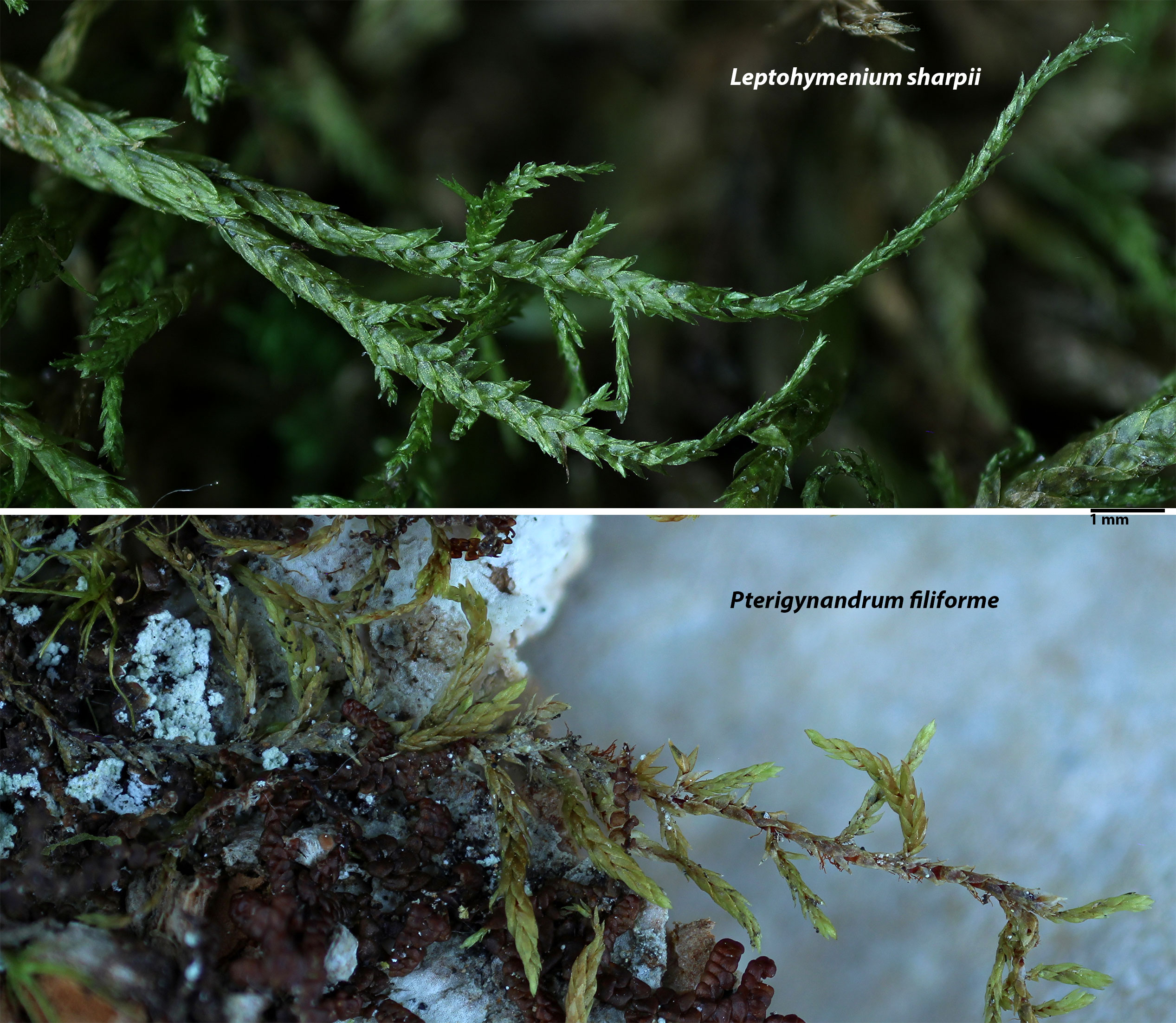
Leptohymenium sharpii vs. Pterigynandum filiforme
Once placed in the genus Pterigynandrum, L. sharpii is shiny in contrast to the dull texture of P. filiforme, seen with the dark liverwort Frullania in the lower image. In the Southern Appalachians P. filiforme occurs on rather dry rock and tree trunks in similar forested conditions as L. sharpii.
